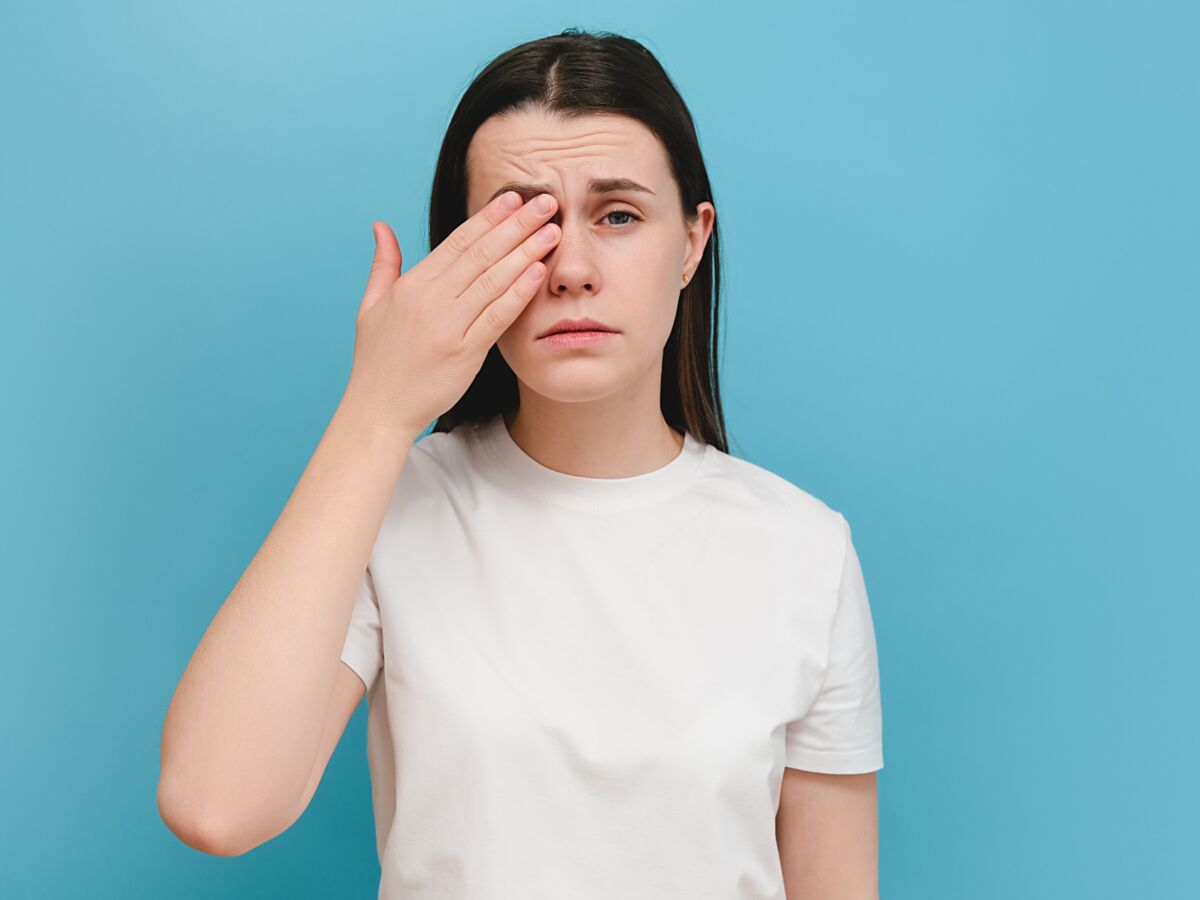If only one eyelid is itchy, other causes may explain the itching, including blockage of the sebaceous glands (blepharitis) or dermatitis (eczema) of the eyelids. Local treatments can relieve this pruritus of the eyelids.
1. Causes of itchy eyelids
One of the main causes of itchy eyelids is dermatitis (“Eczema of the eyelids: symptoms, causes and treatment”, published on the blog of the French Eczema Association). Eyelid dermatitis (also called eyelid eczema, periocular dermatitis or periorbital dermatitis by doctors) is therefore a form of contact dermatitis. It occurs when the skin of the eyelids comes into contact with an allergen or irritant. The eyelids then become red and scaly, symptoms which may be accompanied by swelling, but above all by tingling, burning and itching. Dermatitis of the eyelids generally has several origins: contact dermatitis (caused by an allergic reaction), atopic dermatitis, or seborrheic dermatitis. According to the French Eczema Association, eyelid dermatitis mainly affects women.
Blepharitis is another common cause of itchy eyelids (“Blepharitis,” published by the MSD Manual). It is characterized by inflammation (often chronic) of both eyelids. It occurs when the tiny sebaceous glands located at the base of the eyelashes become clogged, causing irritation, redness and itching. Blepharitis is both embarrassing and unsightly; but it is not contagious, and generally does not affect vision. The primary causes of blepharitis are numerous and sometimes prove difficult to treat, especially since they are sometimes associated with each other:
- seborrheic dermatitis;
- a viral or bacterial infection;
- an occlusion or abnormality of the sebaceous glands;
- rosacea, a skin disorder that manifests as chronic facial redness;
- an allergic reaction, especially to eye drops, contact lens cleaning solutions or make-up (mascara, eyeshadow, eyeliner);
- the presence of mites or lice on the eyelashes;
- keratoconjunctivitis sicca (a kind of dry eye);
- a history of recurrent styes and/or chalazions.
insect bites may also cause itchy eyelids (“Some Causes and Features of Eyelid Swelling,” published by the MSD Manual).
2. How to relieve an itchy eyelid?
Whatever the cause of the itchy eyelid, it is essential to take care of the hygiene of the area. Do not touch your eyelids, or only after washing your hands thoroughly. Do not scratch yourself, do not wear your contact lenses, and do not put on make-up or beauty products, including those known to be hypoallergenic. If your job puts you in contact with irritating products or is exercised in a dusty environment, wear protective goggles that cover the eye sockets well.
If the eyelid is itchy due to an allergic reaction, removing the allergen and irritant is usually enough to relieve the itching. In the event of intense pruritus, your doctor or your ophthalmologist may prescribe a topical (eye drops or ointment) or oral corticosteroid, which will reduce the itching, inflammation and swelling of the eyelid. If you want to relieve itching with over-the-counter, non-prescription products, make sure they don’t contain preservatives, fragrances, formaldehyde, lanolin, or parabens, all of which can cause allergies.
In case of blepharitis or contact dermatitis, you can try to relieve the itching of the eyelids by washing your eyes with saline several times a day and applying compresses slightly moistened with warm water. If this is not enough, your doctor will prescribe a treatment depending on the cause of the blepharitis:
- Antibiotics in the case of bacterial blepharitis, in the form of eye drops (eye drops), ointments, or tablets to swallow if local treatments are not effective.
- Anti-inflammatory treatment, which takes the form of cortisone eye drops or ointments.
- Medicines that act on the immune system, to reduce the body’s defense response and relieve symptoms.
- When this inflammation of the eyelids is caused by seborrheic dermatitis, rosacea or other skin pathologies, it is essential to treat the underlying disease of which it is only one of the symptoms.
Sources:
French Eczema Association, MSD Manual
Read also :
⋙ Eyelid diseases: to be taken seriously
⋙ Swollen eyelid: the different possible causes and the best remedies
⋙ Why do we have the eyelid that trembles?
